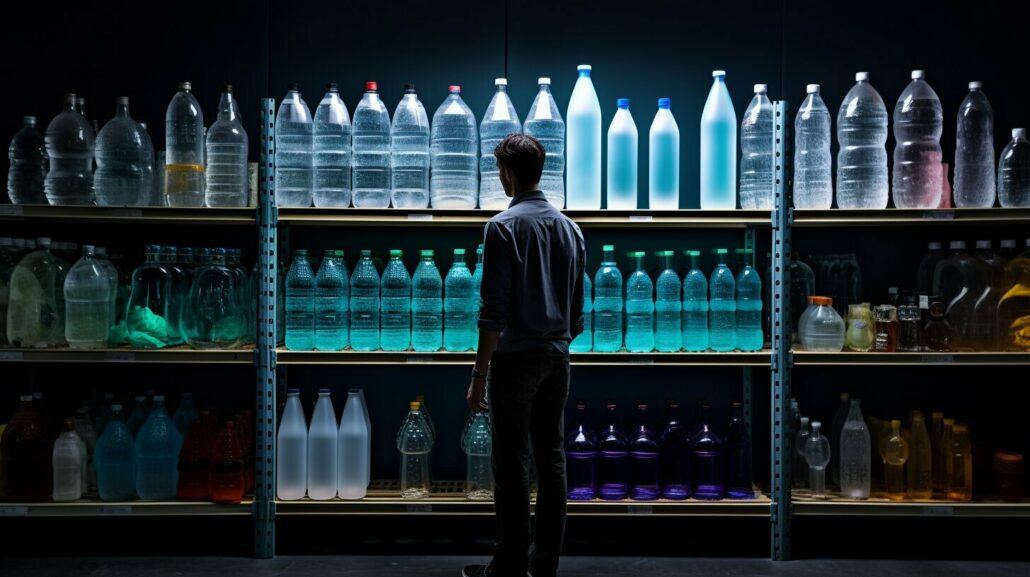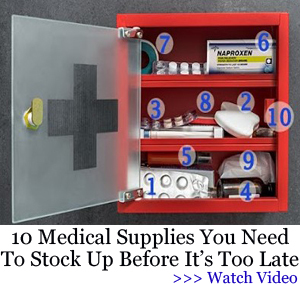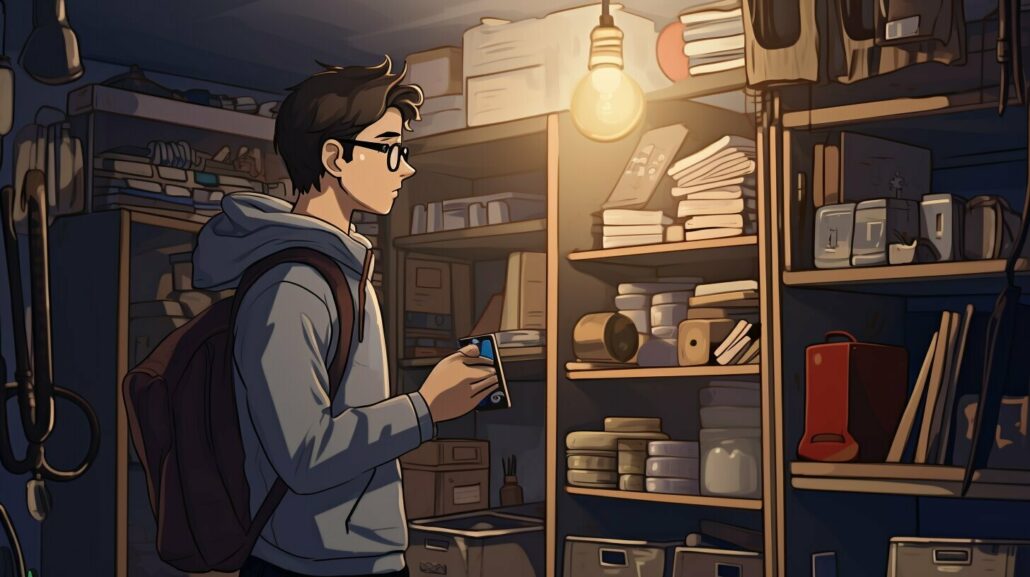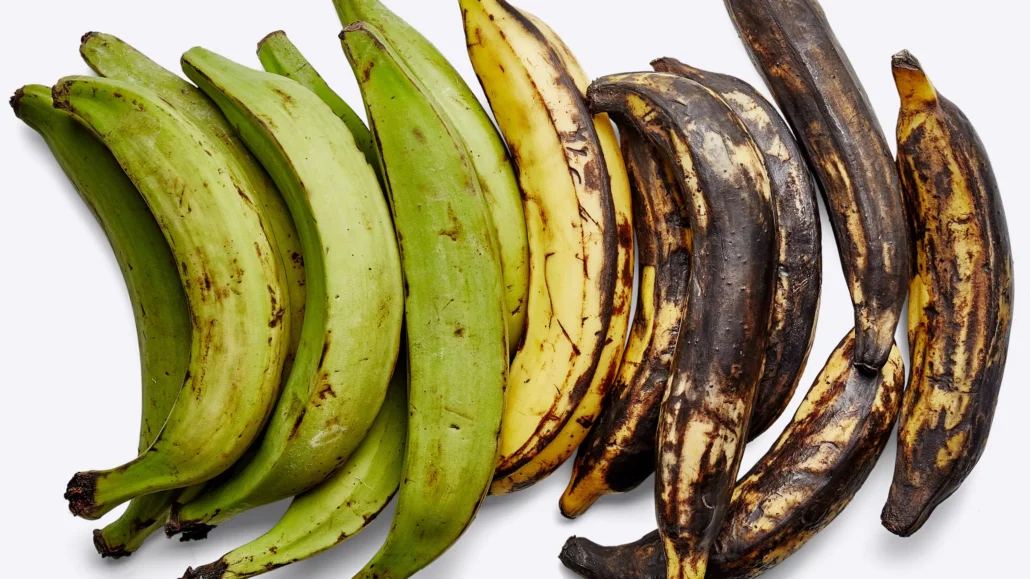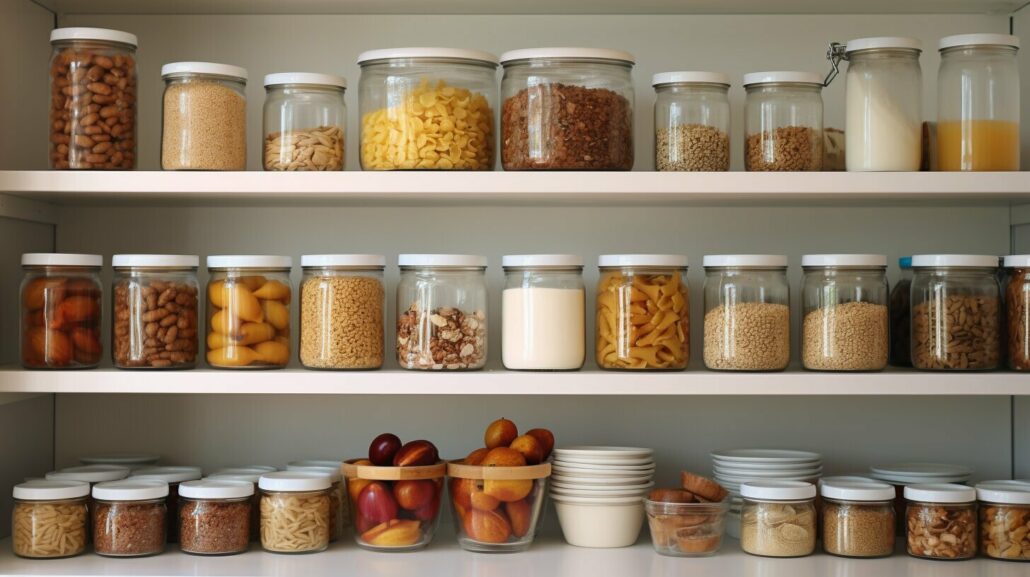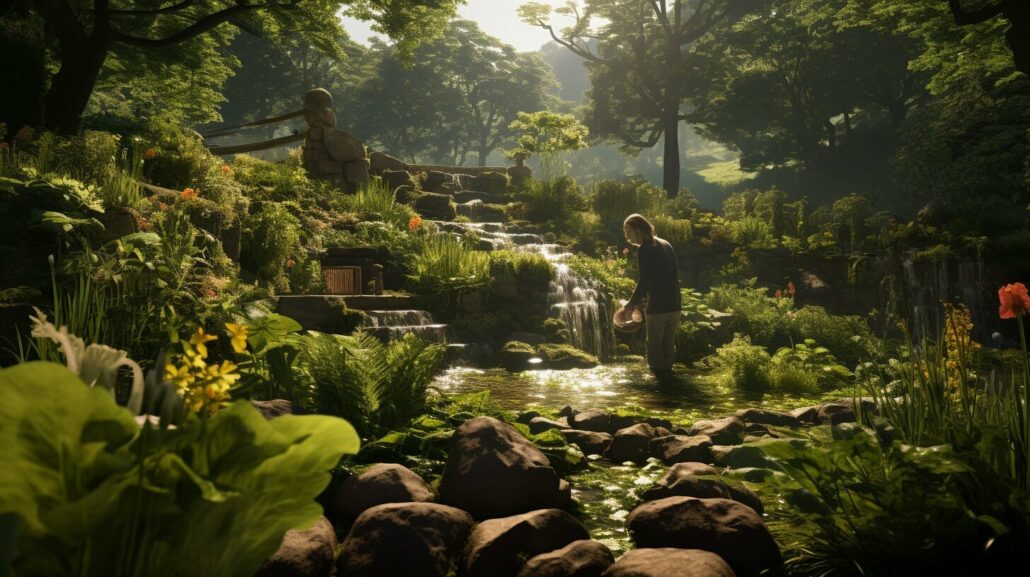In emergency situations, having an adequate supply of clean water is crucial for survival. A normally active person needs to drink at least two quarts (half gallon) of water each day, and more for those in hot environments, children, nursing mothers, and ill people. It is recommended to store at least one gallon of water per person, per day for food preparation and hygiene.
It is important to store water in food-grade, non-degradable, airtight containers. Some options include pre-bottled containers, water bricks, water barrels, or a Water Bob. Rainwater can also be caught in plastic drums, and water from hot water tanks and toilet tanks can be used if the local water supply is contaminated. To purify untreated water, add plain, unscented household bleach. When storing water, avoid direct sunlight and concrete surfaces, and rotate stored water regularly. In the wild, water can be found in retention ponds, rivers and streams, rainwater, brackish water, and well water.
Key Takeaways:
- Having an ample supply of clean water is crucial in emergency situations.
- A normally active person needs at least two quarts of water per day, with more required for certain groups.
- One gallon of water per person, per day is recommended for food preparation and hygiene.
- Store water in food-grade, non-degradable, airtight containers.
- Options for water storage containers include pre-bottled containers, water bricks, water barrels, or a Water Bob.
- Alternative water sources include rainwater, water from hot water tanks and toilet tanks, as well as natural sources in the wild.
- Purify untreated water using plain, unscented household bleach.
Understanding Water Needs for Preppers
Understanding the daily water intake needs for preppers is crucial for effective emergency preparedness. In times of crisis or disaster, access to clean drinking water may become limited, making it essential to have an adequate supply on hand. The amount of water each person needs per day can vary depending on factors such as activity level, climate, age, and health condition. As a general guideline, a normally active adult should aim to drink at least two quarts (half gallon) of water daily. However, it is important to note that this amount can increase in hot environments, for children, nursing mothers, and those who are ill.
To ensure you have enough water for all your needs, including food preparation and hygiene, it is recommended to store at least one gallon of water per person, per day. Storing water in the right containers is crucial to maintain its safety and quality. Opt for food-grade, non-degradable, airtight containers that will prevent contamination and the growth of bacteria. There are various options available for water storage, ranging from pre-bottled containers to specialized products like water bricks, water barrels, or a Water Bob.
“In emergencies, it is crucial to have an ample supply of clean water for survival.”
Rainwater can also provide a viable alternative source of water. By catching rainwater using plastic drums, you can supplement your stored water supply. Additionally, in case the local water supply becomes contaminated, water from sources like hot water tanks and toilet tanks can be used. However, it is important to purify untreated water before consumption to remove any potential contaminants. Plain, unscented household bleach can be used for water purification, following specific guidelines for dosage and treatment duration.
When storing water, it is important to consider proper storage techniques. Avoid placing containers in direct sunlight and on concrete surfaces, as these conditions can degrade the quality of the water. Regularly rotating stored water is also essential to ensure freshness. By implementing these practices, you can maintain a reliable supply of clean water for your emergency needs. In the wilderness, water can be found in various natural sources such as retention ponds, rivers and streams, rainwater, brackish water, and well water. However, it is vital to exercise caution and employ suitable water filtration or purification methods when collecting water from these sources.
| Water Source | Advantages | Precautions |
|---|---|---|
| Retention Ponds, Rivers, and Streams | Abundant water source in nature | May contain bacteria, parasites, or pollutants; requires proper filtration or purification |
| Rainwater | Renewable water source | Must be collected and stored using suitable containers; may require filtration or purification |
| Brackish Water | Available in coastal areas | High salt content; requires desalination or treatment |
| Well Water | Natural groundwater source | Quality and safety can vary; requires testing and potentially treatment |
By understanding your daily water intake needs, implementing proper storage techniques, and considering alternative water sources, you can ensure water preparedness for emergencies. Remember, having an ample supply of clean water is essential for survival and maintaining optimal health during challenging times.
Tips for Storing Water for Emergencies
Properly storing water is essential for ensuring a reliable supply during emergencies. In times of crisis, access to clean water may become limited or completely cut off. To be prepared, it is recommended to store at least one gallon of water per person, per day for both drinking and other essential needs like food preparation and hygiene.
When it comes to storing water, choosing the right containers is crucial. It is important to use food-grade, non-degradable, airtight containers that will not contaminate the water. Some options include pre-bottled containers, water bricks, water barrels, or a Water Bob. These containers are designed to keep water safe and can be easily stored in your home or emergency shelter.
| Container Option | Advantages | Disadvantages |
|---|---|---|
| Pre-bottled containers | Readily available, convenient, and portable. | May be more expensive and have limited storage capacity. |
| Water bricks | Modular design for easy storage and transportation. | Can be more costly compared to other options. |
| Water barrels | Large storage capacity and often made with UV-resistant materials. | May require additional equipment for handling and accessing stored water. |
| Water Bob | Designed to use your bathtub as a water storage container. | Dependent on the availability of a bathtub and limited storage capacity. |
In addition to these options, you can also consider collecting rainwater. Rainwater can be caught in plastic drums, which are affordable and easy to find. However, it is important to filter and purify rainwater before consuming it, especially in urban areas where air pollution and contaminants can affect the quality of rainwater.
Remember, proper water storage involves more than just choosing the right containers. It is essential to store water away from direct sunlight and concrete surfaces, as sunlight can promote the growth of algae and concrete can leach chemicals into the water over time. Additionally, it is crucial to rotate stored water regularly to prevent stagnation and ensure its freshness.
Choosing the Right Water Containers
Selecting the right water containers is crucial for maintaining water quality and ensuring long-term storage. When it comes to storing water for emergency preparedness, there are several options to consider. It is important to choose food-grade, non-degradable, airtight containers that will keep your water safe and free from contaminants.
Here are some popular choices:
- Pre-bottled containers: These are convenient and readily available, often in various sizes ranging from individual bottles to gallon jugs. They are typically made from food-grade plastic and are designed for single-use. Keep in mind that they may not be as durable for long-term storage.
- Water bricks: These stackable containers are designed to maximize space efficiency. They are made from sturdy, BPA-free plastic and are suitable for both short-term and long-term storage. Water bricks are a popular choice among preppers due to their versatility and durability.
- Water barrels: These larger containers, usually ranging from 30 to 55 gallons, are ideal for long-term water storage. They are made from food-grade plastic or stainless steel and often come with a spigot for easy access. Water barrels require more space but provide a substantial water reserve.
- Water Bob: This innovative product is designed to turn your bathtub into an emergency water storage container. It is a large, heavy-duty plastic liner that fits snugly in your tub and can hold up to 100 gallons of water. The Water Bob is easy to use and offers a practical solution for those with limited storage space.
“Having the right water containers is essential for ensuring your water supply remains safe and uncontaminated. Make sure to choose containers that are specifically designed for water storage and meet the necessary safety standards.”
Table: Pros and Cons of Different Water Containers
| Container Type | Pros | Cons |
|---|---|---|
| Pre-bottled containers | Convenient, readily available | Not as durable for long-term storage |
| Water bricks | Space-efficient, versatile, durable | Slightly more expensive |
| Water barrels | Large storage capacity, long-term option | Require more space |
| Water Bob | Utilizes existing bathtub, large storage capacity | Requires a bathtub |
When storing water, ensure that your containers are clean and free from any residue. Additionally, it is essential to avoid storing water in direct sunlight or on concrete surfaces, as this can compromise the quality of the water. Remember to rotate your stored water supply regularly to prevent stagnation and maintain freshness.
You can but pretty much all of these items on Amazon these days.
In conclusion, choosing the right water containers is a critical step in emergency preparedness. By selecting suitable containers, you can ensure the safety and long-term viability of your water supply. Evaluate your needs, consider the pros and cons of each option, and make an informed decision for secure water storage.
Alternative Water Sources in Emergency Situations
In emergency situations, it’s important to explore alternative water sources to ensure hydration and survival. When the local water supply is contaminated or unavailable, we need to get creative in finding water sources that are safe for consumption.
“Water is essential for our survival, and in times of crisis, it becomes even more critical to find reliable sources to meet our hydration needs.”
One alternative source is water from hot water tanks. These tanks typically hold a substantial amount of water that can be accessed in emergency situations. However, it’s important to ensure that the water has not been contaminated by any chemicals or minerals that might be present in the tank. Before using this water, it should be filtered and purified to guarantee its safety.
Another option is water from toilet tanks. While it may seem unconventional, the water in the toilet tank is often clean and suitable for consumption in emergency situations. Just be sure not to use the water from the bowl itself, as it may contain harmful bacteria.
Table: Alternative Water Sources
| Water Source | Notes |
|---|---|
| Hot Water Tanks | Filter and purify water before consumption. |
| Toilet Tanks | Avoid using water from the bowl. |
Remember, staying hydrated during a crisis is essential for our well-being. In addition to these alternative water sources, there are other options such as collecting rainwater, finding water in retention ponds, rivers, and streams, or even tapping into well water if available. However, it’s crucial to purify any untreated water to remove contaminants and make it safe for drinking.
By being prepared and knowledgeable about alternative water sources, we can ensure our hydration needs are met during emergencies. Explore these options and always have a backup plan to secure clean drinking water.
Purifying Untreated Water
Knowing how to purify untreated water is essential for making it safe to drink in emergency situations. During a crisis, access to clean water may be limited, and it becomes crucial to have the knowledge and resources to purify water from alternative sources. There are several effective methods that preppers can utilize to ensure the water they consume is free from harmful contaminants.
Boiling Water
One of the simplest and most reliable methods to purify water is by boiling it. Boiling water kills most types of pathogens and makes it safe for consumption. To use this method, bring the water to a rolling boil for at least one minute, or three minutes if you are at high altitudes. After boiling, allow the water to cool before drinking or storing it in a clean container.
Water Purification Tablets
Water purification tablets are another effective way to disinfect untreated water. These tablets contain chemicals, such as chlorine dioxide, that kill bacteria, viruses, and protozoa. Follow the instructions provided by the manufacturer for the correct dosage and treatment time. Water purification tablets are lightweight, portable, and a convenient option for purifying water on the go.
Filtration Systems
Using a water filtration system can remove harmful substances and impurities from untreated water, making it safe to drink. Look for filters specifically designed for camping or emergency situations, as they are designed to remove contaminants like bacteria, parasites, and heavy metals. Portable water filters with a pore size of less than 0.1 microns are recommended for optimal purifying results.
| Purification Method | Advantages | Disadvantages |
|---|---|---|
| Boiling Water | – Simple and effective – Kills most pathogens | – Requires a heat source – Takes time to boil and cool |
| Water Purification Tablets | – Lightweight and portable – Kill bacteria, viruses, and protozoa | – Chemical taste and odor – Limited effectiveness against certain contaminants |
| Filtration Systems | – Remove bacteria, parasites, and heavy metals – Easy to use and transport | – Some filters may not remove all contaminants – Requires regular maintenance and replacement of filter elements |
In conclusion, purifying untreated water is a critical skill for preppers to ensure a safe and reliable water supply in emergency situations. Boiling water, using water purification tablets, or employing water filtration systems are effective methods to eliminate harmful pathogens. Consider the advantages and disadvantages of each purification method when choosing the most suitable option for your specific needs. By understanding and implementing these purification techniques, you can have peace of mind knowing that the water you consume is clean and safe.
Proper Water Storage and Rotation
Proper water storage and regular rotation are essential for maintaining water quality and freshness during emergencies. When storing water for long-term use, it is important to follow a few key guidelines. First and foremost, choose food-grade, non-degradable, airtight containers to prevent any contamination or spoilage. Options such as pre-bottled containers, water bricks, water barrels, or a Water Bob are ideal for storing water.
It is also crucial to store water in a cool, dark place away from direct sunlight and concrete surfaces. Sunlight can promote the growth of algae and bacteria, while concrete can leach chemicals into the water. By keeping water in a cool, dark environment, you can minimize the risk of microbial growth and maintain its quality over time.
In addition to proper storage, regular rotation of stored water is necessary to ensure its freshness. Over time, even properly stored water can develop a stale taste and lose its quality. By rotating your water supply every six months, you can ensure that you always have fresh, potable water available when needed.
| Storage Guidelines: | Rotate Water Every Six Months: |
|---|---|
| Choose food-grade, non-degradable containers | Discard old water and replace with fresh supply |
| Store water away from direct sunlight and concrete | Use the old water for non-potable purposes |
| Keep water in a cool, dark environment | Refill containers with fresh water |
By following these proper storage and rotation practices, you can ensure that your emergency water supply remains clean, safe, and ready to use when needed. Remember, water is a critical resource during emergencies, and it’s essential to be well-prepared.
Finding Water in the Wild
When in the wild during emergencies, knowing how to find water sources is crucial for survival. In such situations, it is important to be aware of various water sources that can help quench your thirst and ensure your well-being.
Retention ponds, rivers, and streams: These natural water bodies are often abundant in remote areas. They can provide a reliable source of water for drinking and cooking. However, it is essential to purify the water from these sources before consumption to avoid waterborne illnesses.
Rainwater: During rainfall, collecting rainwater can be an effective way to obtain a clean water supply. Plastic drums are a great option for catching and storing rainwater. Make sure to position the drums in an open area away from contaminants like bird droppings or pollutants from nearby structures.
| Water Source | Advantages | Considerations |
|---|---|---|
| Retention Ponds, Rivers, and Streams | Abundant natural water sources | Water needs to be purified before consumption |
| Rainwater | Clean source of water | Requires proper collection and storage methods |
| Brackish Water | Can be filtered and desalinated | May require additional equipment and expertise |
| Well Water | Accessible in some areas | Needs to be tested for contamination |
Brackish water: In coastal or desert regions, brackish water, which is a mixture of fresh and saltwater, may be available. While this water source is not suitable for direct consumption, it can be filtered and desalinated to obtain potable water, provided you have the necessary equipment and expertise.
Well water: If you come across a well in the wilderness, it could be a valuable water source. However, be cautious and test the water for any potential contamination before using it for drinking or cooking.
Remember, when finding water in the wild, always prioritize safety and ensure that any water you consume is purified and safe for consumption. Being knowledgeable about different water sources in emergency situations greatly enhances your chances of survival.
Rainwater Harvesting for Emergency Preparedness
Rainwater harvesting can provide a sustainable water source during emergencies, and utilizing appropriate collection methods is key. When collecting rainwater, it is important to have a proper setup to ensure the water collected is clean and safe for consumption. One effective method is to use plastic drums for collection. These drums should be food-grade and placed in areas where rainwater runoff is easily captured, such as under roof gutters or downspouts.
To prevent debris from entering the collection system, it is recommended to install a mesh screen or leaf guard at the inlet of the drum. This will help filter out leaves, twigs, and other particles that may contaminate the water. Additionally, having a first flush diverter can further enhance the quality of the collected rainwater. This device diverts the initial flow of rainwater, which may contain pollutants from the roof, preventing them from entering the storage container.
When using rainwater for drinking or cooking purposes, it is important to purify the water to eliminate any potential contaminants. Boiling the water is one effective method, but it may not always be feasible during an emergency situation. In such cases, using a water filter or adding a water purification tablet can help ensure the safety of the collected rainwater. Remember to follow the manufacturer’s instructions when using these purification methods.
| Advantages of Rainwater Harvesting | Considerations for Rainwater Harvesting |
|---|---|
|
|
By implementing rainwater harvesting techniques and utilizing proper collection methods, you can ensure access to a reliable water source during emergencies. Remember to regularly inspect and maintain your rainwater harvesting system to prevent contamination and ensure the availability of clean water when needed. Stay prepared, stay hydrated!
Conclusion: Ensure Water Preparedness for Emergencies
Adequate water preparedness is essential for ensuring survival during emergency situations. In times of crisis, access to clean water becomes even more critical, as it is needed for drinking, food preparation, and personal hygiene. As a general guideline, it is recommended to have a minimum of one gallon of water per person, per day stored for emergency use.
To effectively store water, it is important to use food-grade, non-degradable, and airtight containers. Pre-bottled containers, water bricks, water barrels, or a Water Bob are all suitable options. Additionally, rainwater can be collected in plastic drums, and water from hot water tanks and toilet tanks can be utilized if the local water supply is contaminated.
When faced with untreated water sources, it is crucial to purify the water before consumption. Adding plain, unscented household bleach can help ensure its safety. Remember to follow the recommended guidelines for purifying water.
Proper storage techniques are also essential in maintaining the quality of stored water. Avoid exposing water containers to direct sunlight and concrete surfaces, as they can deteriorate the containers and compromise the water quality. Regularly rotating stored water helps maintain its freshness and prevent the presence of harmful bacteria.
In emergency situations, it is also worth considering alternative water sources in the wild. Retention ponds, rivers and streams, rainwater, brackish water, and well water are all potential options. However, it is important to remember that some water sources may require additional purification methods to ensure their safety for consumption.
Understanding the importance of water preparedness and implementing the necessary steps to ensure an adequate supply will significantly increase your chances of survival during emergencies. Take the time to assess your water needs, gather suitable containers, and explore alternative water sources. Remember, when it comes to water preparedness, it is always better to be over-prepared than under-prepared.
FAQ
Q: How much water does a person need to drink every day?
A: A normally active person needs to drink at least two quarts (half gallon) of water each day.
Q: Do certain groups of people need more water?
A: Yes, those in hot environments, children, nursing mothers, and ill people may need to drink more water each day.
Q: How much water should I store for emergencies?
A: It is recommended to store at least one gallon of water per person, per day for food preparation and hygiene.
Q: What kind of containers should I use to store water?
A: It is important to store water in food-grade, non-degradable, airtight containers. Some options include pre-bottled containers, water bricks, water barrels, or a Water Bob.
Q: Can I use alternative water sources during emergencies?
A: Yes, you can use water from hot water tanks and toilet tanks if the local water supply is contaminated. Natural sources like retention ponds, rivers and streams, rainwater, brackish water, and well water can also be utilized.
Q: How can I purify untreated water?
A: To purify untreated water, add plain, unscented household bleach according to the recommended guidelines.
Q: Are there any tips for proper water storage?
A: When storing water, avoid direct sunlight and concrete surfaces, and rotate stored water regularly to ensure freshness.
Q: Where can I find water in the wild?
A: Water can be found in retention ponds, rivers and streams, rainwater, brackish water, and well water in wilderness environments.
Q: Can I collect rainwater for emergencies?
A: Yes, rainwater can be caught in plastic drums and used as a source of emergency water supply.
Q: Why is water preparedness important in emergencies?
A: Having an ample supply of clean water is crucial in emergencies for hydration, food preparation, and hygiene purposes.

